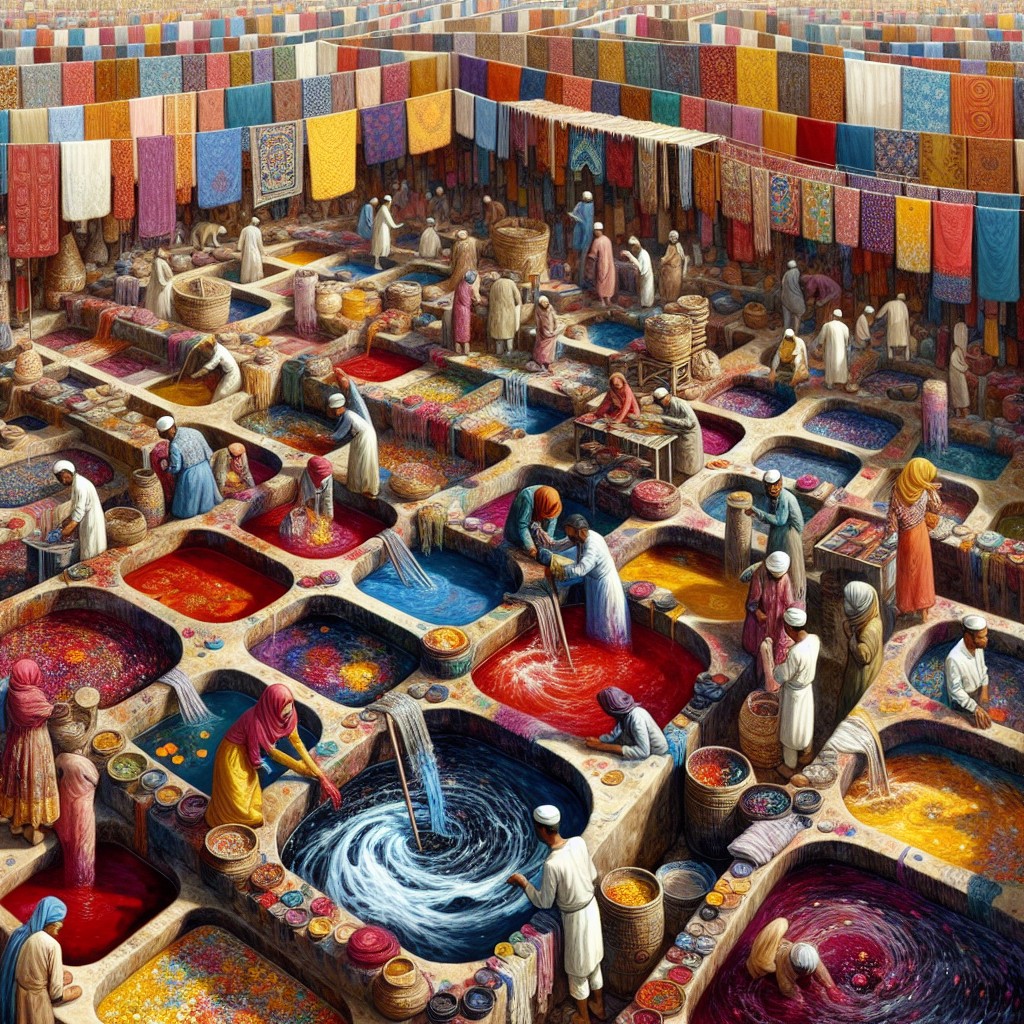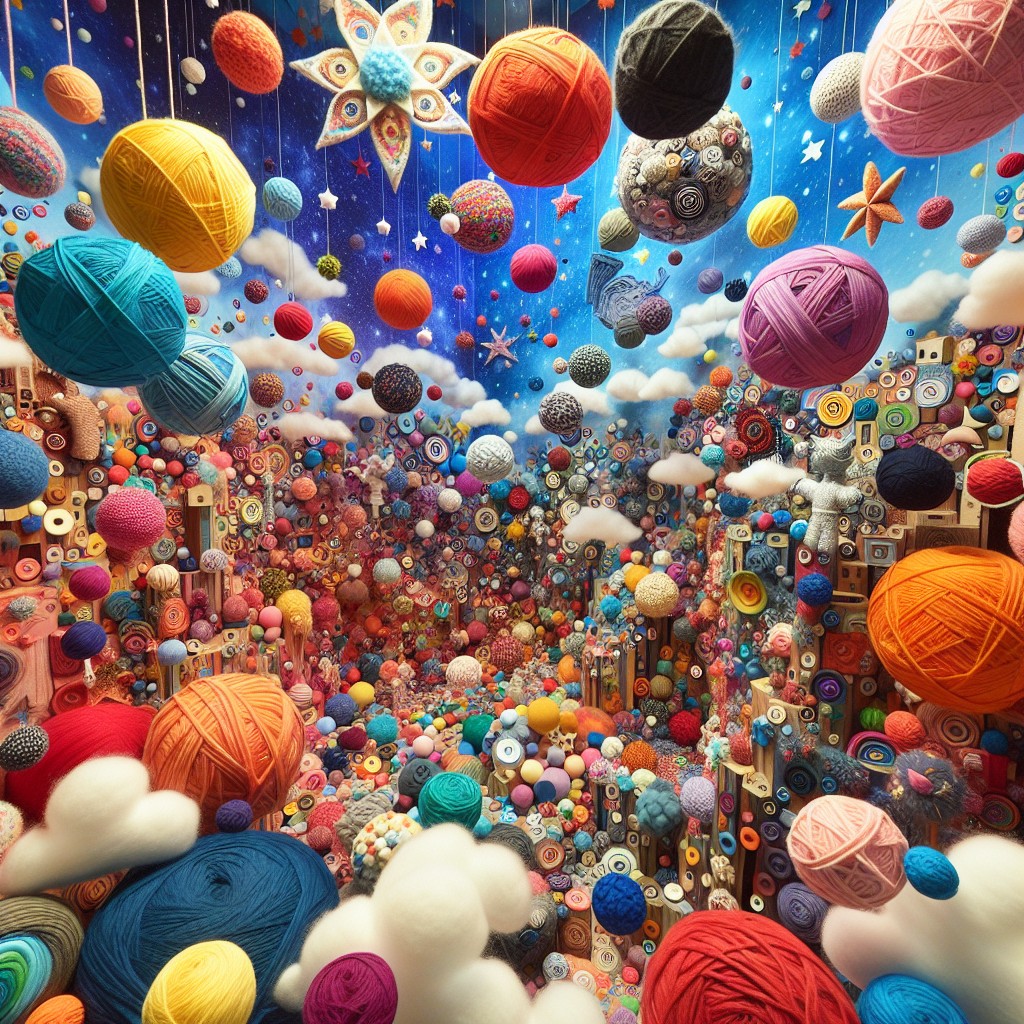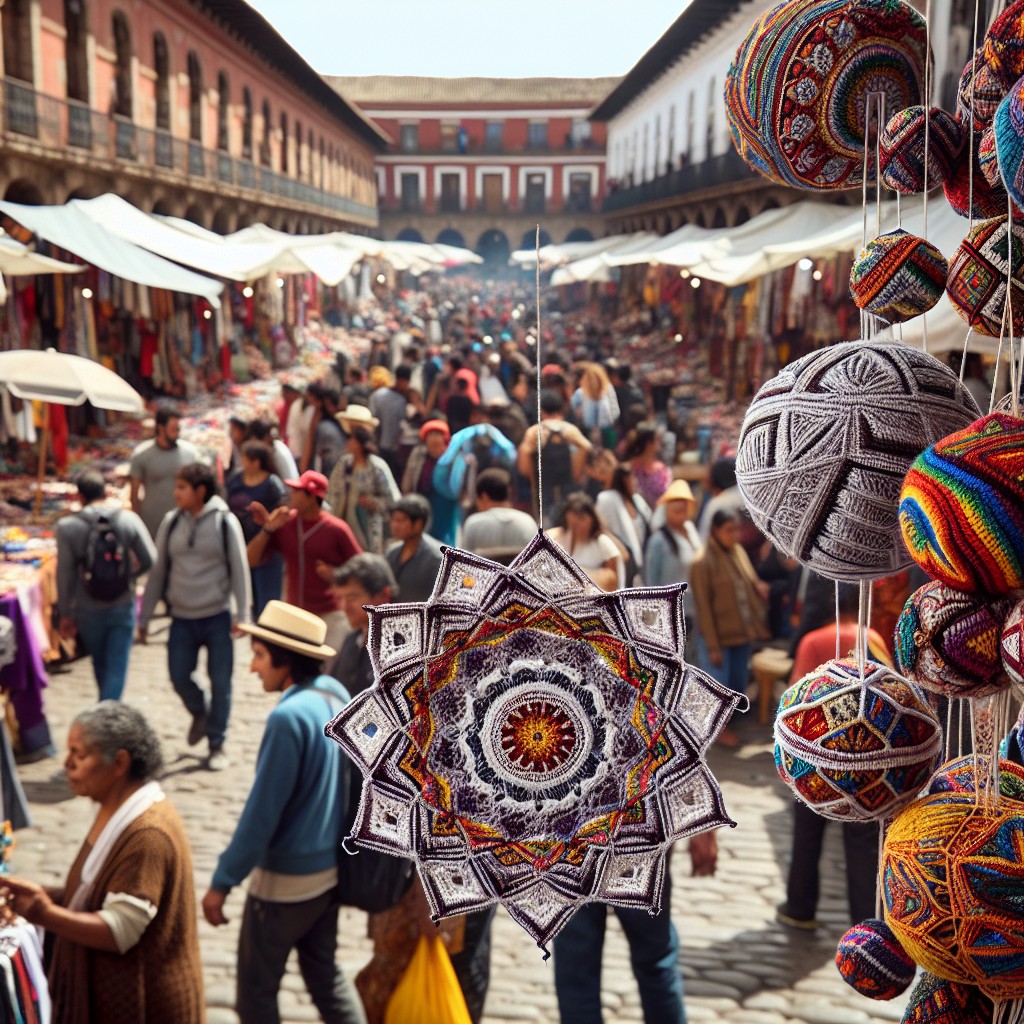Explore our comprehensive analysis of the vibrant world of textile dyeing, uncovering fascinating trends and insights that shape this colorful industry.
Diving into the world of textile dyeing, one can easily get lost in the colorful complexity of this craft. But fear not, this article is your guide, revealing the most relevant statistics in the industry.

From the percentage of textiles dyed using natural versus synthetic dyes, to the environmental impact of each method, and the market size and growth of the textile dyeing industry, this article will provide you with a comprehensive overview.
Stay tuned for a deep dive into these fascinating stats, offering you a clear understanding of the current trends and future projections in textile dyeing.
The global textile dye market size is set to reach USD 16.79 billion in 2032 and a CAGR of 6.8%
According to market research, the value of worldwide trade for textile dyes is projected to balloon considerably over the next decade. Analysts estimate a Compound Annual Growth Rate (CAGR) of 6.8%, signaling a rise in demand and sales for these products.
By 2032, the sector is expected to amass revenues of up to USD 16.79 billion. The increased demand can be attributed to the expanding textile industry, which continues to embrace vibrant color trends.
This growth indicates the critical role of textile dyes in global economies, encouraging further investments in the sector.
By 2027, the market will reach $12.57 billion and a steady CAGR of 6.8%
Anticipating consistent growth at a compound annual growth rate (CAGR) of 6.8%, the market will attain an impressive milestone of $12.57 billion by 2027.
An augmented demand for textile dyes across the global market is the primary force propelling this upward trend.
Technologies improving the textile dyeing process, coupled with rising demand for sustainably-produced fabrics, also contribute to this expected expansion.
Achroma and Atul Ltd are the major players in the textile dye market
Achroma, an international leader based in Singapore, has a portfolio that encompasses multiple dye categories, including reactive, disperse, and direct dyes. Its extensive research and development facilities focus on delivering high-performance and sustainable solutions to meet the evolving needs of the industry.
Atul Ltd, an India-headquartered company, serves across various industries and is notably influential in the textile dye market. With a broad product range of vat, sulphur, direct, and reactive dyes, they cater to a large consumer base while maintaining a conscious approach toward environmental concerns. They continuously invest in developing greener processes and products.
Both companies, Achroma and Atul Ltd, exhibit strong expertise in their area, leading the way in innovation, environmental responsibility, and market coverage in the textile dye industry. Their key contributions have helped shape the current dynamics and trends in this market.
1/5 of water pollution comes from textile dyes
The alarming influence of textile dyes on water bodies cannot be overlooked. The industry contributes to approximately 20% of the total global water pollution.
The ramifications extend to wildlife and human populations, often causing health problems and environmental degradation.
Toxic runoff from dyeing plants seeps into rivers and groundwater, contaminating these sources.
These hazardous chemicals not only deplete the oxygen in water bodies, leading to biodiversity loss, but also harm farmers and communities relying on the water bodies for irrigation and drinking purposes, respectively.
Efforts are needed to explore more eco-friendly dyeing methods that use less water and produce less wastewater.
43 million tons of chemicals are used in textile production every year
Yearly, the textile industry utilizes a staggering volume of chemicals. To put it into perspective, one might consider the astonishing figure of 43 million tons. This extensive use is primarily for dyeing the materials that bring vibrant colors to our clothes and other fabric items.
The large-scale usage has a significant environmental impact, posing challenges to sustainable and eco-friendly textiles. Ultimately, this calls for an urgent need to research and develop more environmentally friendly dyeing methods and materials.
200 tonnes of water are used per tonne of fabric in the textile industry
The enormity of water consumption in the textile industry cannot be overstated. To produce one tonne of fabric, as much as 200 tonnes of water may be required. This usage goes into various stages of production including pretreatment, dyeing, finishing, and washing.
Balancing industry needs with sustainable practices confronts significant challenges considering such high water demand. This triggers the urge for the adoption of more efficient dyeing technologies, reduction methods, and recycling procedures to moderate the extensive water consumption and promote more sustainable textile production.
The fashion industry emits 10% of global carbon emissions, more than international flights and maritime shipping
Despite its aesthetic appeal, the fashion industry is a significant contributor to global pollution. Accounting for a sizeable 10% of global carbon emissions, it surpasses the combined emissions of all international flights and maritime shipping.
The manufacturing processes, particularly dyeing and treatment, not only consume a vast amount of resources but also produce hazardous waste, often released untreated into the environment. Water consumption, energy-intensive production and transportation of goods result in a considerable carbon footprint.
The development of sustainable practices and technologies in dyeing processes is, therefore, an essential step towards reducing the industry’s environmental impact.
Textile dyeing is the 2nd largest water pollutant globally
In terms of global pollution, textile dyeing holds an alarmingly high rank. It’s responsible for an enormous emission of waste, significantly contributing to water pollution.
This industrial process typically involves the extensive use of water, along with numerous chemicals, dyes, and finishing agents. When inadequately managed, the effluents with high chemical load are discharged directly into water bodies.
This leads to severe environmental issues, affecting both aquatic life and water quality. Despite recent advancements in environmentally friendly dyeing techniques, the overall pollution level from this industry continues to pose a substantial threat.
Therefore, sustainable practices need to be adopted to minimize the environmental impact and preserve water quality.
Textile dyeing is responsible for 44% of the carbon footprint emitted by coal and natural gas
Despite being less recognized, the textile dyeing industry significantly contributes to the overall annual greenhouse gas emissions. When analyzed, the impressive carbon footprint is found to be on par with the notoriously high-emitting coal and natural gas sectors.
To put it into perspective, 44% of these heavy industries’ emissions can be attributed to textile dyeing. This can be primarily traced back to the extensive energy required in the dyeing process, including heating water to high temperatures and running heavy machinery.
The environmental ramifications are a pressing concern and highlight the need for increased sustainable practices in the textile industry.
Phasing coal boilers would reduce emissions from textile manufacturing by 13%
The transition from coal boilers in the textile industry is a major step towards achieving a significant decrease in carbon emissions. Research has shown that such a move could lead to a reduction of as high as 13%. This change, combined with other green initiatives, can be a considerable step towards a more sustainable future for clothing production.
These coal-fired boilers used in various manufacturing processes, including, notably, textile dyeing, emit high amounts of carbon. Thus, phasing them out constitutes a tangible action in climate change mitigation efforts. Despite the initial expenses, the switch to cleaner, renewable energy sources promises great environmental returns and aligns with the pressing need to reduce textile industry-related emissions.
References:
- https://www.reportsanddata.com/
- https://www.thebusinessresearchcompany.com/
- https://www.cnn.com/





